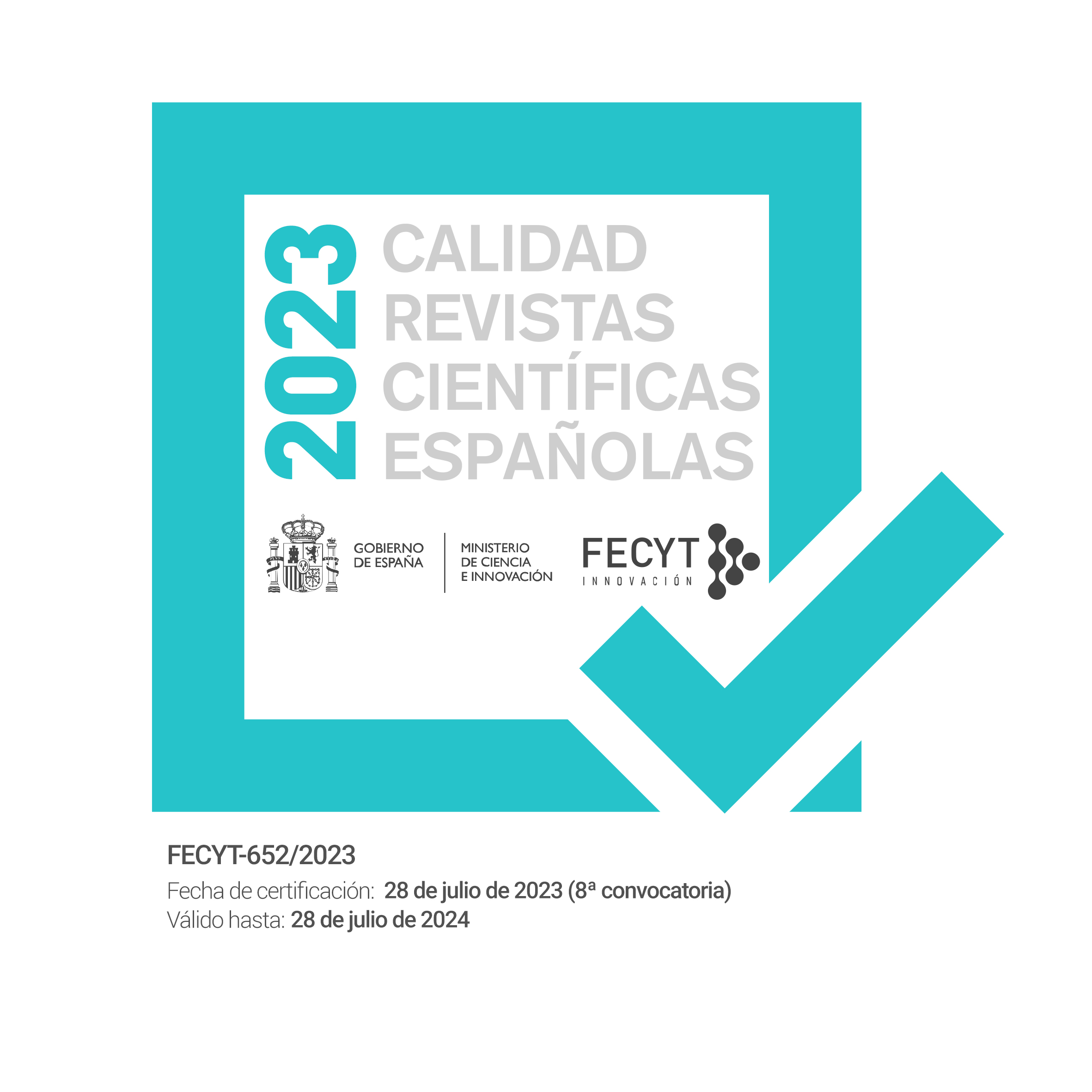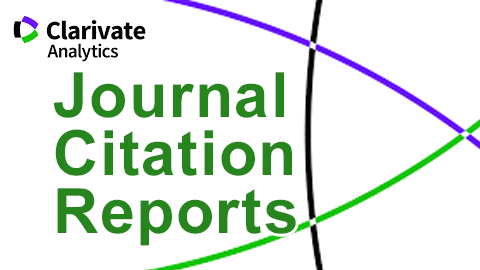MULTIMODAL METAPHORICAL AND METONYMIC RENDERINGS OF PAIN IN ADVERTISING: A CASE STUDY
Resumen
Pain is a subjective and highly complex experience that is truly difficult to communicate. Figurative language is the main means by which the difficulty of communicating pain is overcome. In recent times, the verbal conceptualization of pain has been the focus of several linguistic studies. However, the representation of pain via non-linguistic modes is yet to be explored. This paper aims to describe and analyze the metaphorical and metonymic visual and multimodal renderings of pain in the advertising of painkiller pharmaceuticals. With such a purpose in mind, I examine an advertising campaign for an NSAID drug used for the relief of (chronic) joint pain. My findings suggest that through the exploitation of pictorial and multimodal metaphor and metonymy, advertisers render common conceptualizations of pain, e.g. through the sharp object or confinement source domains, in order to present painkiller users with recognizable inherently cultural and emotional aspects of pain. Thus, the consumer is invited to take part in the meaning creation of the advertisement.Citas
Atherly, A. and P. H. Rubin. 2009. The cost-effectiveness of direct-to-consumer advertising for prescription drugs. Medical Care Research and Review 66(6): 639-57. http://dx.doi.org/10.1177/1077558709335362.
Biro, D. 2010. The Language of Pain: Finding Words, Compassion, and Relief. New York: Norton.
Biro, D. 2011. Redefining Pain. Palliative and Supportive Care 9: 107-110. http://dx.doi.org/10.1017/S1478951510000593.
Bonch-Osmolovskaya, A., E. Rakhilina and T. Reznikova. 2009. Conceptualization of Pain: A Database for Lexical Typology. In P. Bosch, D. Gabelaia and J. Lang (eds.), Logic, Language and Computation. 110-123. Berlin and Heidelberg: Springer-Verlag.
Callister, M. A. and L. A. Stern. 2007. The role of visual hyperbole in advertising effectiveness. Journal of Current Issues and Research in Advertising 29(2): 1-14. http://dx.doi.org/10.1080/10641734.2007.10505212.
Chananie, R. A. 2005. Psychopharmaceutical advertising strategies: empowerment in a pill? Sociological Spectrum: Mid-South Sociological Association 25(5): 487-518. http://dx.doi.org/10.1080/027321790947261.
Cienki, A. and C. Müller, eds. 2008. Metaphor and Gesture. Amsterdam and Philadelphia: John Benjamins.
Deignan, A., J. Littlemore and E. Semino. 2013. Figurative Language, Genre and Register. Cambridge: Cambridge University Press.
Delbaere, M. 2013. Metaphors and Myths in Pharmaceutical Advertising. Social Science & Medicine 82: 21-29. http://dx.doi.org/10.1016/j.socscimed.2013.01.020.
Donohue, J. M., M. Cevasco and M. B. Rosenthal. 2007. A decade of direct-to-consumer advertising of prescription drugs. New England Journal of Medicine 357(7): 673-681.
Fauconnier, G. and M. Turner. 2002. The Way We Think: Conceptual Blending and the Mind’s Hidden Complexities. New York: Basic Books.
Forceville, C. 1996. Pictorial metaphor in advertising. London and New York: Routledge.
Forceville, C. 2002. The identification of target and source in pictorial metaphors. Journal of Pragmatics 34(1): 1-14. http://dx.doi.org/10.1016/S0378-2166(01)00007-8.
Forceville, C. 2008. Metaphor in pictures and multimodal representations. In R. Gibbs, Jr. (ed.), The Cambridge Handbook of Metaphor and Thought. 462-482. Cambridge: Cambridge University Press.
Forceville, C. 2009. Metonymy in visual and audiovisual discourse. In E. Ventola and A. J. Moya Guijarro (eds.), The World Told and the World Shown: Issues in Multisemiotics. 56-74. Basingstoke and New York: Palgrave MacMillan.
Forceville, C. and E. Urios-Aparisi, eds. 2009. Multimodal metaphor. Berlin and New York: Mouton de Gruyter.
Gilbody, S., P. Wilson and I. Watt. 2004. Direct-to-consumer advertising of psychotropics. An emerging and evolving form of pharmaceutical company influence. The British Journal of Psychiatry 185(1): 1-2. http://dx.doi.org/10.1192/bjp.185.1.1.
Goatly, A. 2007. Washing the Brain: Metaphor and Hidden Ideology. Amsterdam and Philadelphia: John Benjamins.
Green, C. D. and J. Vervaeke. 1996. Fusion, Protolanguage, and Pictures. Paper presented at the American Psychological Convention (Division 10), Toronto. Retrieved from: http://www.yorku.ca/christo/papers/fpp.htm.
Halliday, M. A. K. 1998. On the grammar of pain. Functions of Language 5(1): 1-32. http://dx.doi.org/10.1075/fol.5.1.02hal.
Hidalgo-Downing, L. and B. Kraljevic-Mujic. 2011. Multimodal metonymy and metaphor as complex discourse resources for creativity in ICT advertising discourse. Review of Cognitive Linguistics 9(1): 153-178. http://dx.doi.org/10.1075/ml.9.1.08hid.
International Association for the Study of Pain. 1979. Pain terms: A list with definitions and notes on usage. Pain 6(3): 249-252. http://dx.doi.org/10.1016/0304-3959(79)90046-0.
Jill A. F. and L. M. Ronald. 2008. Direct to consumer responsibility: Medical neoliberalism in pharmaceutical advertising and drug development. In S. M. Chambré, M. Goldner (eds.), Patients, Consumers and Civil Society (Advances in Medical Sociology, Volume 10). 29-51. Bingley: Emerald Group Publishing Limited.
Koller, V. 2009. Brand images: multimodal metaphor in corporate branding messages. In C. Forceville and E. Urios-Aparisi (eds.). 45-71.
Kövecses, Z. 2000. Metaphor and Emotion: Language, Culture, and Body in Human Feeling. Cambridge: Cambridge University Press.
Kövecses, Z. 2008. The conceptual structure of happiness and pain. In C. Lascaratou, A. Despotopoulou and E. Ifantidou (eds.), Reconstructing Pain and Joy: Linguistic, Literary, and Cultural Perspectives. 17-33. Newcastle: Cambridge Scholars Publishing.
Kövecses, Z. 2010. Metaphor: A Practical Introduction (2nd ed.). Oxford: Oxford University Press.
Kress, G. and T. van Leeuwen. 2006. Reading Images: The Grammar of Visual Design (2nd ed.). London and New York: Routledge.
Lakoff G. 1993. The Contemporary Theory of Metaphor. In A. Ortony (ed.), Metaphor and Thought. 202-251. Cambridge: Cambridge University Press.
Lakoff, G. and M. Johnson. 2003 (1980). Metaphors we live by. Chicago: University of Chicago Press.
Lascaratou, C. 2007. The language of pain: Expression or description. Amsterdam and Philadelphia: John Benjamins.
Marmaridou, S. 2006. On the conceptual, cultural and discursive motivation of Greek pain lexicalizations. Cognitive Linguistics 17(3): 393-434. http://dx.doi.org/10.1515/COG.2006.012.
Melzack, R. 1975. The McGill pain questionnaire: Major properties and scoring methods. Pain 1: 277-299. http://dx.doi.org/10.1016/0304-3959(75)90044-5.
Padfield, D. 2003. Perceptions of Pain. Stockport: Dewi Lewis Publishing.
Patharakorn, P. 2010. Pain language: A Thai case study (Unpublished master’s thesis). Retrieved from http://espace.library.uq.edu.au/view/UQ:211645.
Pérez-Sobrino, P. 2014. Meaning construction in verbomusical environments: Conceptual disintegration and metonymy. Journal of Pragmatics 70: 130-151. http://dx.doi.org/10.1016/j.pragma.2014.06.008
Pérez-Sobrino, P. In press. Shockvertising: patterns of conceptual interaction constraining advertising creativity. Círculo de Lingüística Aplicada a la Comunicación 62.
Reznikova, T, E. Rakhilina and A. Bonch-Osmolovskaya. 2012. Towards a typology of pain predicates. Linguistics 50(3): 421-465. http://dx.doi.org/10.1515/ling-2012-0015.
Rubin, P. H. 2001. Pharmaceutical advertising as a consumer empowerment device. The Journal of BioLaw & Business 4(4): 59-65.
Ruiz de Mendoza, F. J. and S. Peña. 2008. Grammatical metonymy within the «action’ frame in English and Spanish. In M. A. Gómez, J. L. Mackenzie and E. M. González-Álvarez (eds.), Current Trends in Contrastive Linguistics: Functional and Cognitive Perspectives. 251-280. Amsterdam and Philadelphia: John Benjamins.
Ruiz de Mendoza, F. J. and A. Galera-Masegosa. 2011. Going beyond metaphtonymy: Metaphoric and metonymic complexes in phrasal verb interpretation. Language Value 3: 1-29.
Ruiz de Mendoza, F. J. and L. Pérez. 2001. Metonymy and the grammar: motivation, constraints and interaction. Language and Communication 21(4): 321-357. http://dx.doi.org/10.1016/S0271-5309(01)00008-8.
Schott, G. D. 2004. Communicating the experience of pain: The role of analogy. Pain 108: 209-212. http://dx.doi.org/10.1016/j.pain.2004.01.037.
Semino, E. 2008. Metaphor in Discourse. Cambridge: Cambridge University Press.
Semino, E. 2010. Descriptions of pain, metaphor and embodied simulation. Metaphor and Symbol 25(4): 205-226. http://dx.doi.org/10.1080/10926488.2010.510926.
Semino, E., J. Heywood and M. Short. 2004. Methodological problems in the analysis of metaphors in a corpus of conversations about cancer. Journal of Pragmatics 36(7): 1271-1294. http://dx.doi.org/10.1016/j.pragma.2003.10.013.
Steen, G. 2008. The paradox of metaphor: Why we need a three-dimensional model of metaphor. Metaphor and Symbol 23(4): 213-241. http://dx.doi.org/10.1080/10926480802426753.
Urios-Aparisi, E. 2009. Interaction of multimodal metaphor and metonymy in TV commercials: Four case studies. In C. Forceville and E. Urios-Aparisi (eds.). 95-118.
Descargas
Publicado
Número
Sección
Licencia
Reconocimiento – No comercial (CC BY-NC). Bajo esta licencia el usuario puede copiar, distribuir y exhibir públicamente la obra y puede crear obras derivadas siempre y cuando estas nuevas creaciones reconozcan la autoría de la obra original y no sean utilizadas de manera comercial.
Los autores retienen todos sus derechos de publicación y copyright sin restricciones.









